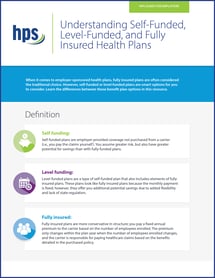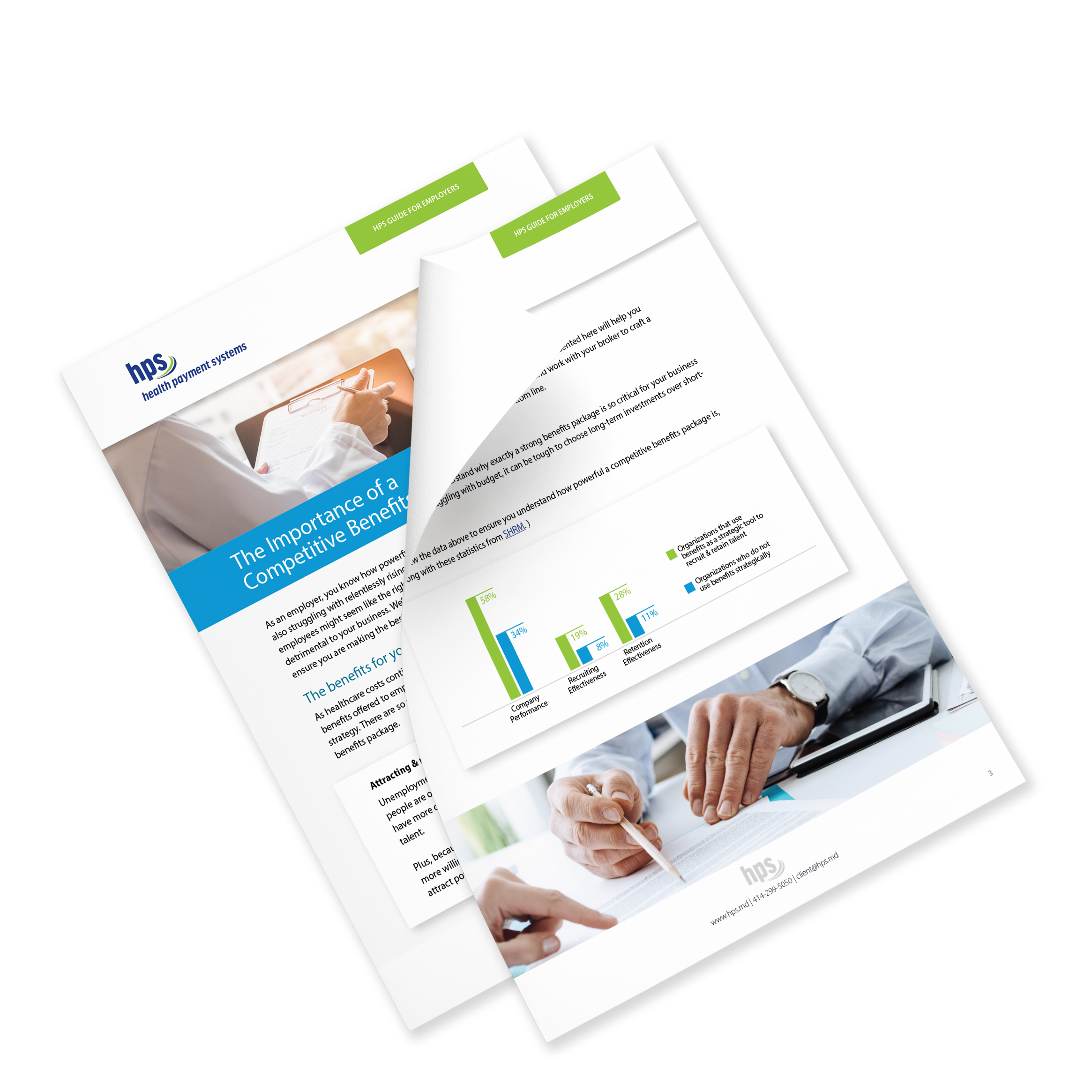Self-funding is an approach to financing an employer’s health benefit offering that provides greater flexibility and control, plus the opportunity for significant cost savings. Though it isn’t ideal for all employers, many can benefit from a self-funded (or level-funded) plan as instead of the traditional fully insured model.
A self-funded health insurance plan is an employer-provided coverage plan that is not purchased from an insurance carrier (i.e., the employer pays the claims themselves). The employer assumes a greater risk, but also has greater potential for savings than with fully-insured plans.
 Self-Funding vs. Level-Funding vs. Fully Insured Plans
Self-Funding vs. Level-Funding vs. Fully Insured PlansUnderstand how self-funded and level-funded plans differ from traditional fully insured benefit plans in this guide.
Potential Downsides to Self-Funding
Self-funding can be confusing at first and can lead to employers setting up plans in a way that doesn’t help them, but actually hurts their bottom line. Here are some of the common pitfalls to self-funding—all of which can be avoided with proper planning:

When employers are considering self-funding, they need to take special care to ensure their plan includes some specific elements that they may not have considered with previous plan types.
There are two basic kinds of stop-loss coverage:
Stop-loss coverage reduces the overall risk of self-funding for the employer. It basically ensures that when claims are extremely high, for an individual or total, the employer will not be responsible for all of the costs.
There are limits to what stop-loss insurance covers. For example, for stop-loss reinsurance (specific stop-loss), the maximum per-claim amount is often $1,000,000. Employers should be aware of what their stop-loss limit is when they design their plan to ensure they aren’t surprised by additional costs if they exceed their stop-loss limit.
Additionally, employers should be aware that when stop-loss kicks in to pay for excessive claims, the plan premium may increase in future plan years. This could mean that if one employee experiences a catastrophic claim in a specific plan year, employee costs may go up for all employees in future plan years to account for a higher premium cost for that one employee.
In order to successfully switch to self-funding, it’s pertinent to find an administrator who is familiar with the structure. TPAs handle a lot of the behind-the-scenes details of self-funded plans, including:
There are many details to self-funding your benefits plan that should not be overlooked, so finding an experienced TPA is key.
A PBM provides services and education to aid covered employees and their families with the appropriate prescription of drugs for maximum effectiveness. These services may include:
With self-funding, employers have the flexibility to build plans that work for their organizations and employees. They are able to include services such as:
A network is a group of providers that have agreed to provide a discount to covered individuals when utilizing their services. Employers must decide if they want to offer a broad or narrow network.
Some employers may choose to use similar networks to the ones they utilized prior to switching to self-funding, and others may not. Network flexibility is a benefit of self-funding, but the network should be chosen carefully, with historical claims data in mind, to ensure the proper balance of employee satisfaction and employer cost savings.

To understand self-funding better, it helps to know how this plan type differs from other plan types you may be familiar with.

Level-funded health insurance plans are actually a type of self-funded plan. But how does that work?
Instead of the employer simply paying claims as they go, a TPA determines a customized monthly payment amount for the employer. That payment amount doesn’t change throughout the year. It includes the following:
What happens is that when claims come in, the claims are paid out of the claims allowance. The TPA handles this. Since the employer is paying a specific monthly amount, costs are more predictable than with standard self-funded plans.
If, at the end of the plan year, the claims paid out are less than the amount allotted for, the employer may receive money back. It is important to understand that with level-funded plans, TPA fees and stop-loss premiums may be weighted higher than the claims allowance, so with the predictability of the plan, there may not be a claims excess at the end of the plan year, even if claims are lower than expected.
With a level-funded health insurance plan, there may be slightly higher fees than with a self-funded plan (although still lower than with fully-insured); however, the employer is never caught off-guard with unexpected expenses throughout the plan year.
Level-funding can be a good first step toward self-funding.
As an employer, you know how powerful an excellent benefits package can be. You’re probably also struggling with relentlessly rising healthcare costs. Cutting benefits or passing off more costs to employees might seem like the right strategy to manage your bottom line, but that choice can be detrimental to your business.
There are many advantages for employers who choose to offer a competitive benefits package, such as:
Learn why a competitive benefits package is so critical for your business and how to make the best decisions for your needs.

Offering a competitive benefits plan doesn’t have to mean busting the budget. You can find opportunities to manage costs while still offering quality benefits.
Your broker should go beyond just quoting plan rates for you. They should help you create a benefits package that strategically supports your business goals, including hiring, employee engagement and retention. Talk to your broker about building the right benefits plan together that is cost-effective but also high-quality.